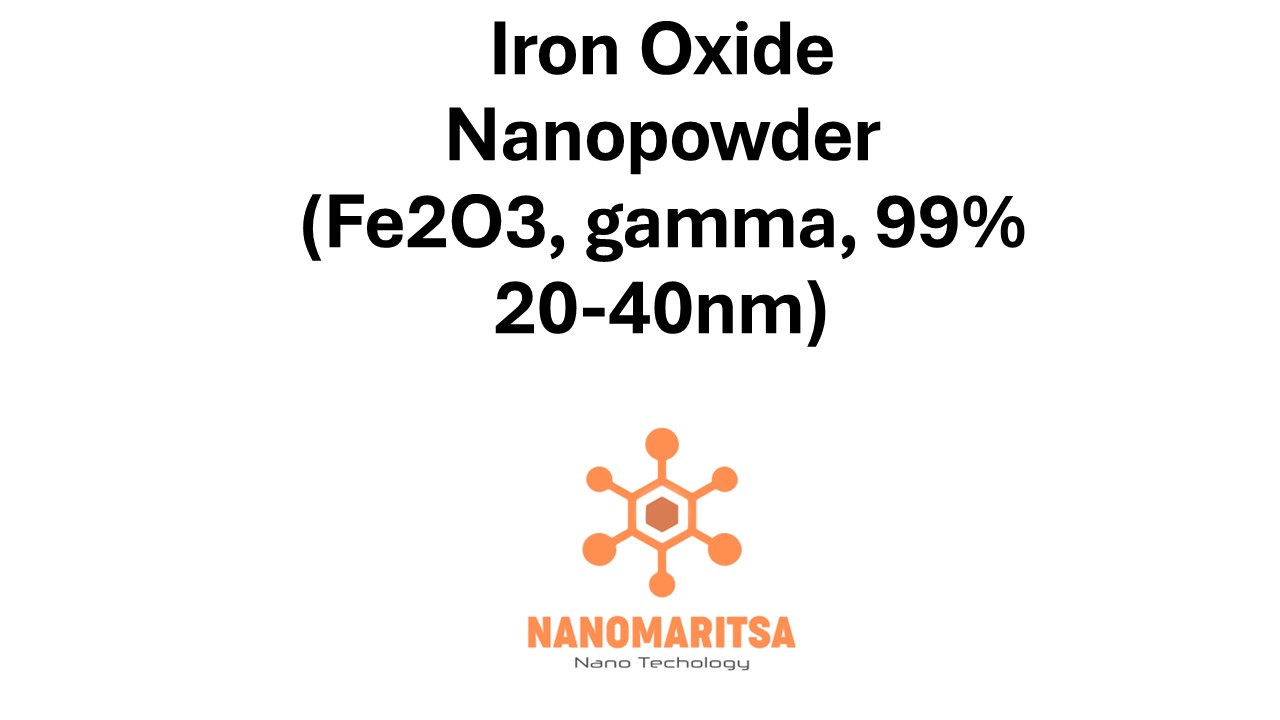Iron oxide nanopowder (Fe₂O₃, gamma phase, 99%, 20–40 nm) is a versatile nanomaterial with a broad range of applications due to its magnetic, chemical, and physical properties. This powder exhibits characteristics that make it suitable for cutting-edge scientific research and industrial use.
Composition and Structure
- Fe₂O₃ (Iron(III) Oxide):
- A compound of iron and oxygen where iron is in the +3 oxidation state.
- Often referred to as maghemite in the gamma phase.
- Gamma Phase (γ-Fe₂O₃):
- A metastable crystalline structure that exhibits magnetic properties, particularly superparamagnetism or ferromagnetism, depending on particle size and environment.
- The γ phase is commonly used in magnetic and electronic applications.
- Purity (99%):
- High purity ensures minimal interference from impurities, making it suitable for sensitive applications.
- Particle Size (20–40 nm):
- Slightly larger nanoparticles compared to 10 nm powders, resulting in lower surface area but potentially enhanced stability.
- Retains nanoscale properties while allowing easier handling compared to ultrafine powders.
Properties
- Magnetic Behavior:
- Exhibits superparamagnetic properties at the nanoscale, enabling applications in magnetic storage, sensors, and biomedical devices.
- Reactivity:
- Moderate particle size provides a balance between high reactivity and structural stability.
- High Stability:
- Resistant to oxidation and degradation under normal conditions.
- Biocompatibility:
- Suitable for biomedical applications when coated or functionalized appropriately.
Applications
1. Biomedical:
- Drug Delivery Systems:
- Functionalized nanoparticles can be directed to specific sites using external magnetic fields.
- Diagnostics and Imaging:
- Used as contrast agents in magnetic resonance imaging (MRI).
- Hyperthermia Therapy:
- Heat generation via alternating magnetic fields targets and destroys cancer cells.
2. Catalysis:
- Heterogeneous Catalysis:
- Acts as a catalyst for oxidation reactions, improving energy efficiency in chemical processes.
- Environmental Applications:
- Facilitates the degradation of pollutants and purification of air or water systems.
3. Electronics and Magnetics:
- Data Storage:
- Utilized in magnetic recording media due to its ability to store information in magnetic domains.
- Sensors:
- Detects magnetic, gas, or electrical changes, making it ideal for advanced sensor technology.
4. Energy:
- Battery Development:
- Improves electrode materials in lithium-ion batteries by enhancing charge capacity and cycle stability.
- Photocatalysis:
- Converts light energy into chemical energy, aiding in hydrogen production and environmental cleanup.
5. Environmental Science:
- Water Treatment:
- Adsorbs contaminants like heavy metals, dyes, and toxins from water.
- Pollution Control:
- Serves as an efficient catalyst in breaking down harmful substances in industrial emissions.
Safety and Handling
- Health Risks:
- Nanoscale particles can penetrate biological barriers, necessitating the use of gloves, masks, and ventilation during handling.
- Environmental Impact:
- Generally considered less toxic than many other nanoparticles, but research continues to ensure safe disposal and minimal environmental effects.
Summary
Iron oxide nanopowder (Fe₂O₃, gamma phase, 99%, 20–40 nm) bridges the gap between ultrafine powders and bulk materials, offering unique properties suitable for diverse applications in medicine, electronics, catalysis, and environmental science. Its slightly larger particle size enhances stability, making it easier to work with while retaining most nanoscale benefits. Tailoring its surface properties and functionality allows it to meet specific needs in cutting-edge technologies and industries.
| Measurement (gr) | 100 grams, 500 grams, 1000 grams |
|---|






